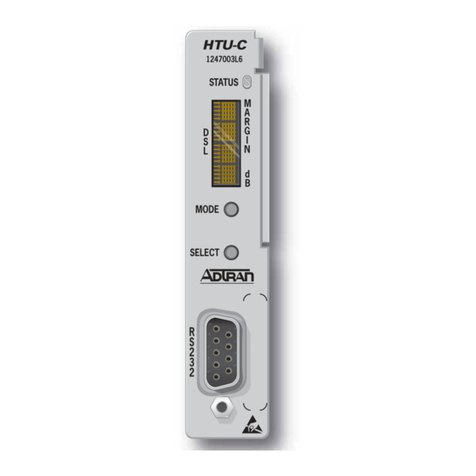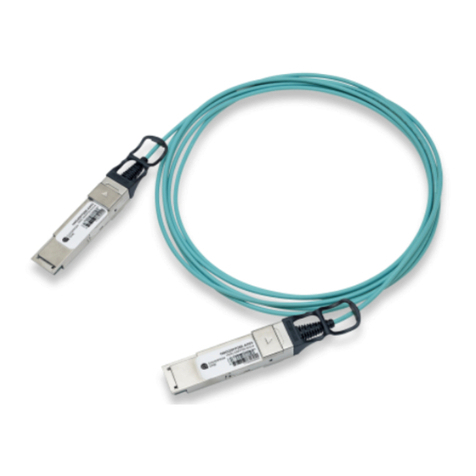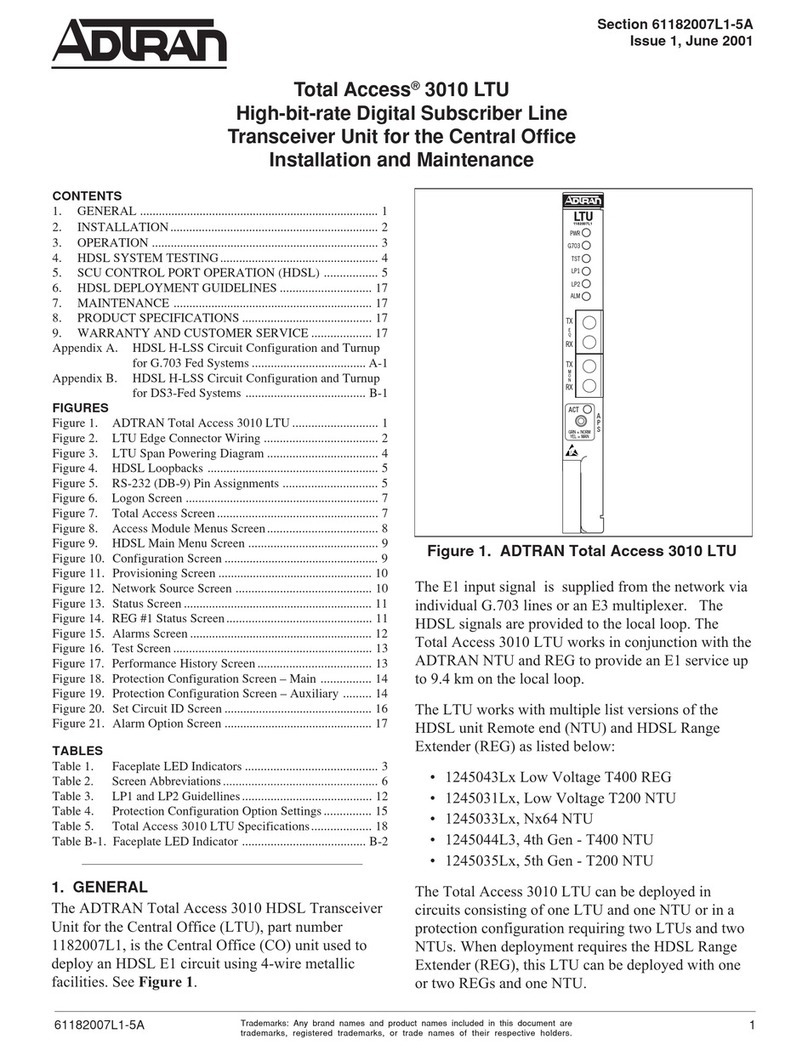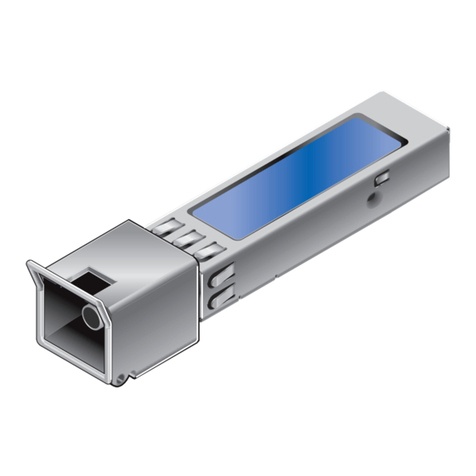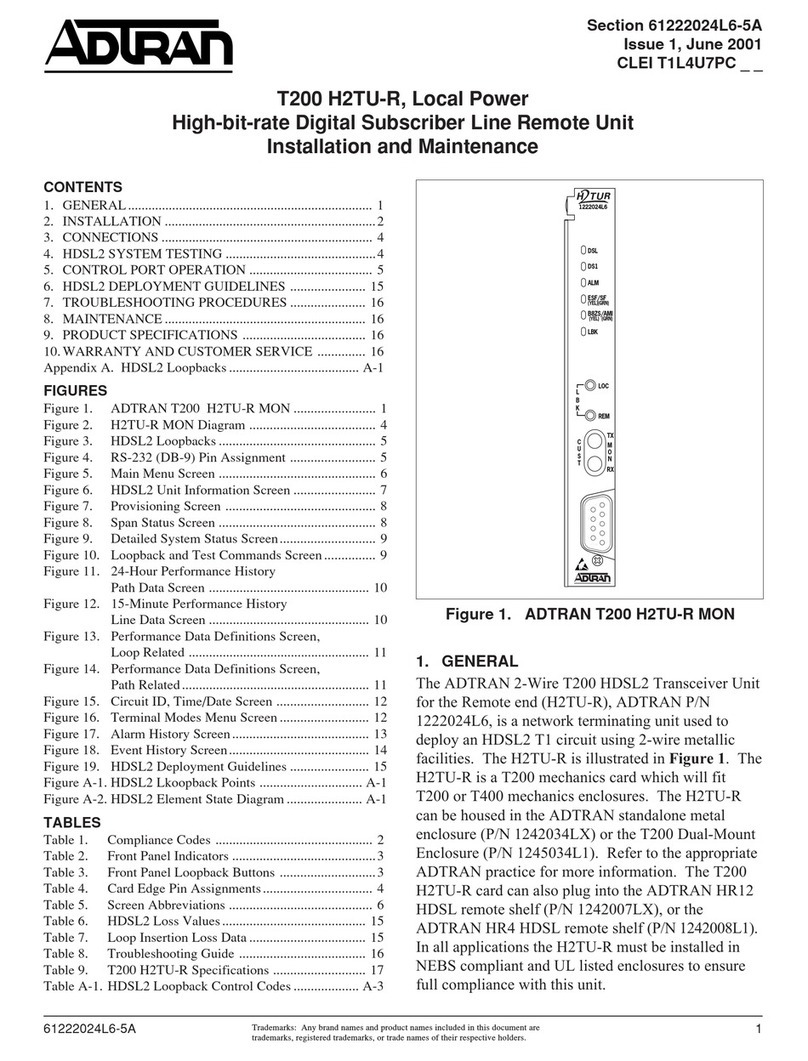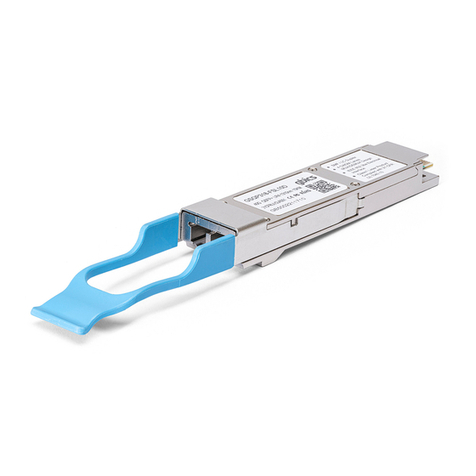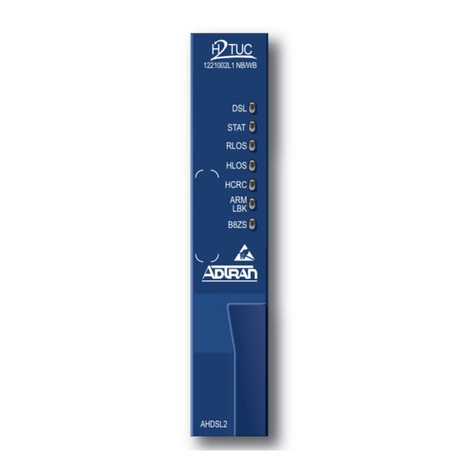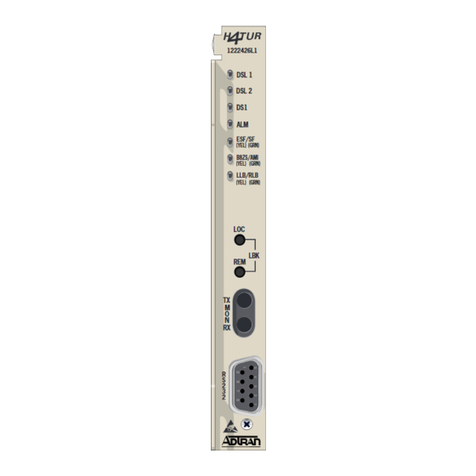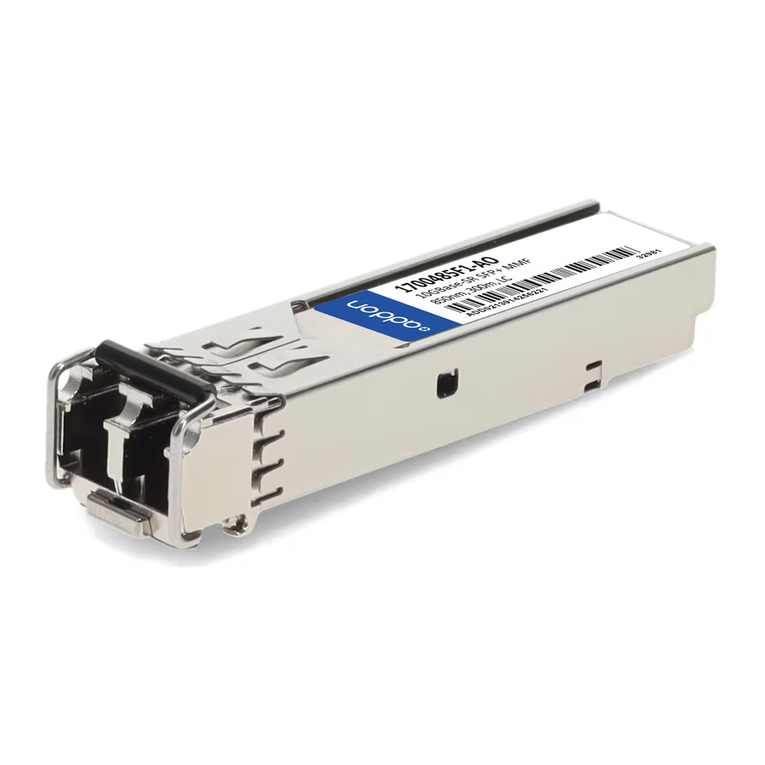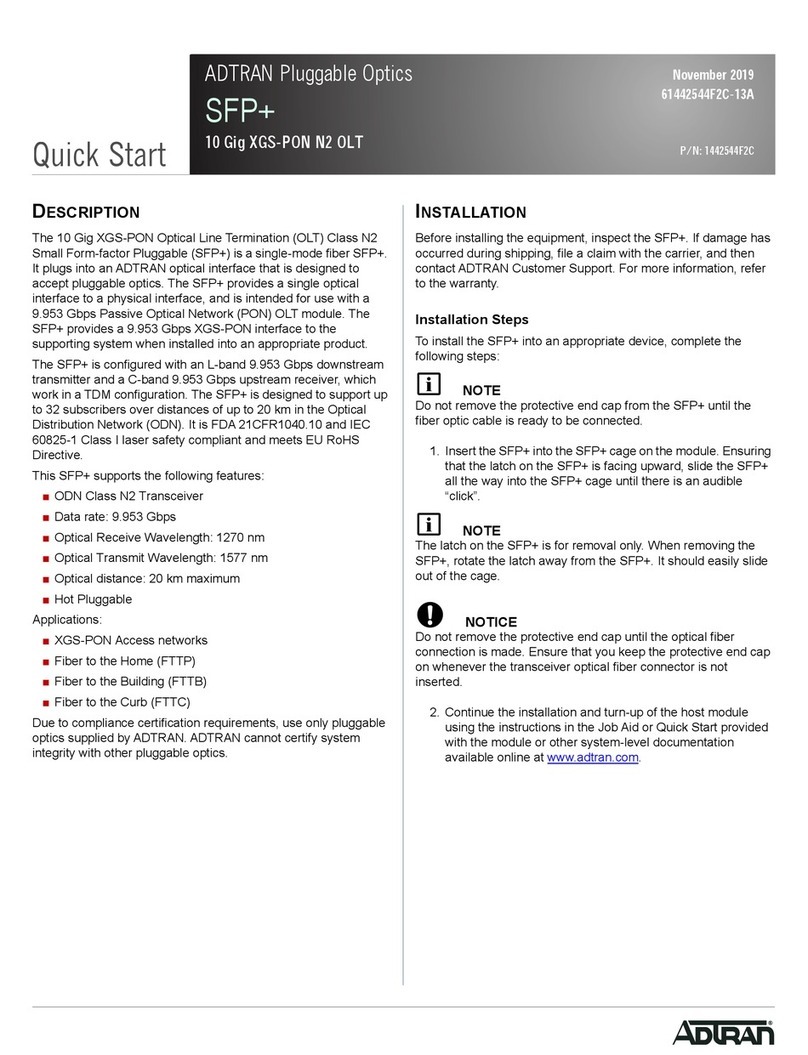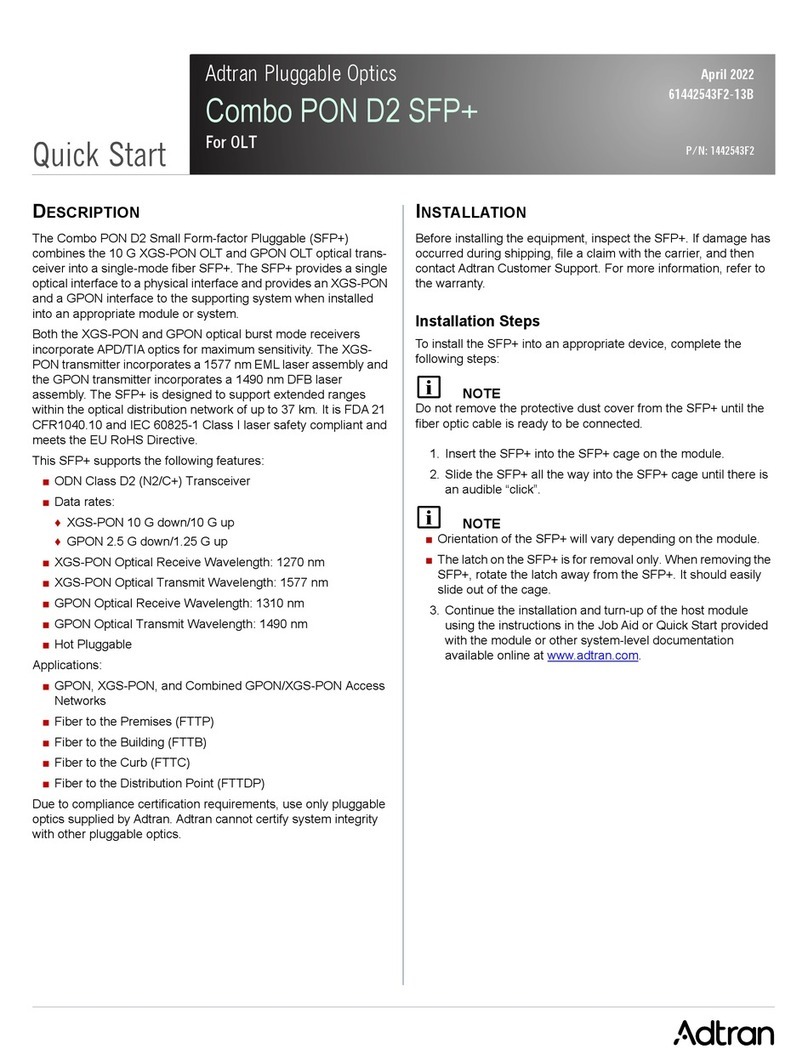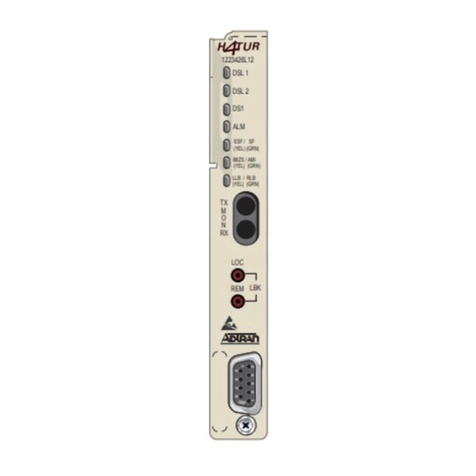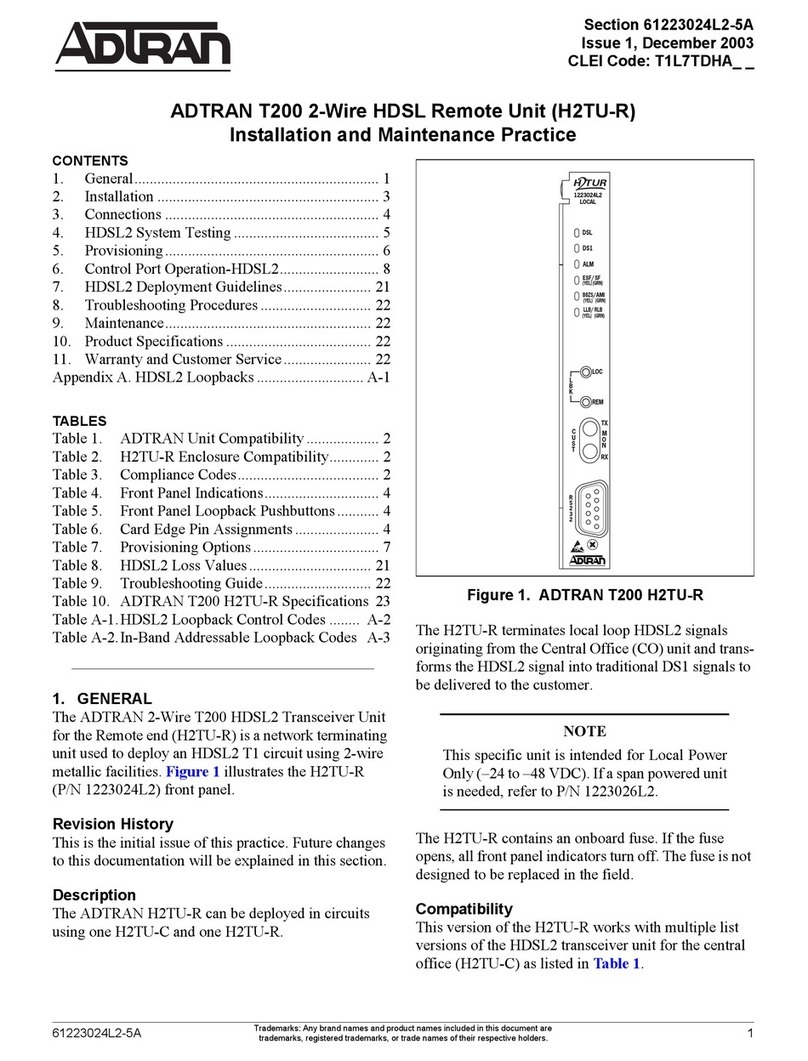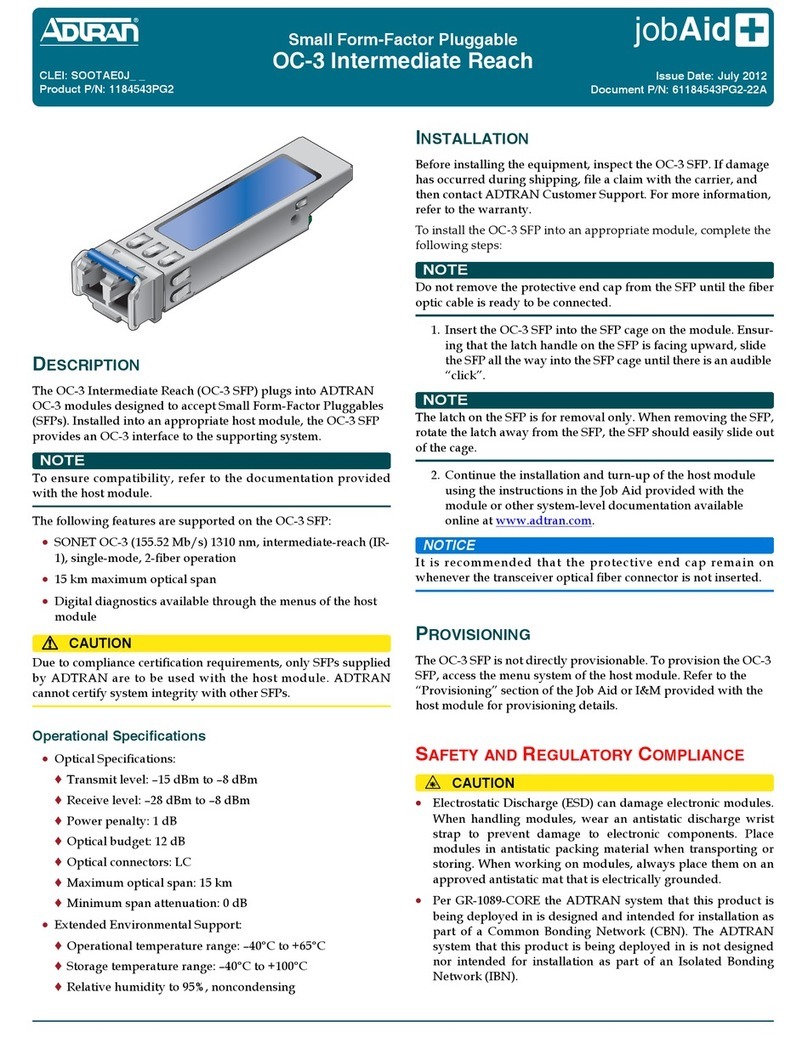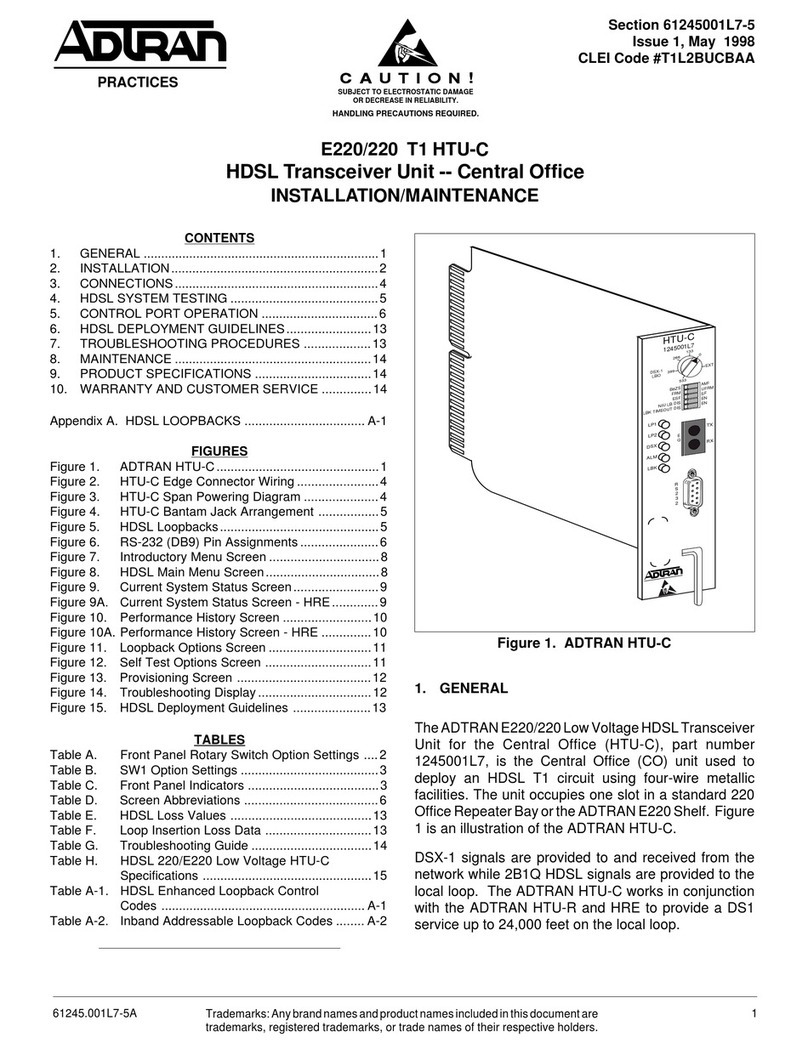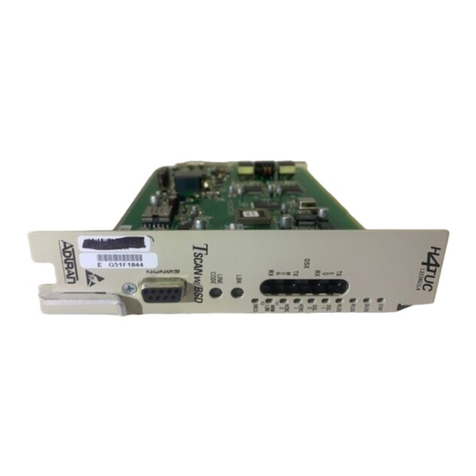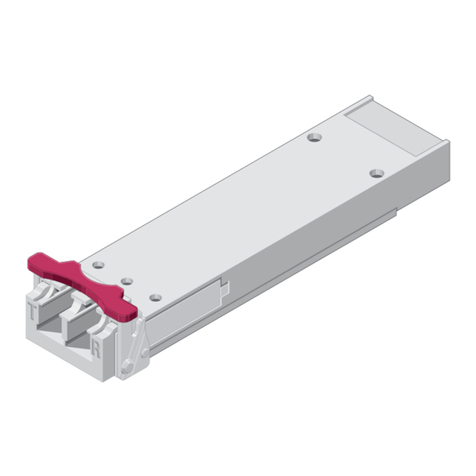
PRICING AND AVAILABILITY 800.827.0807
Warranty: ADTRAN will replace or repair this product within the warranty period if it does not meet its published specifications or fails while in service.
Warranty information can be found online at www.adtran.com/warranty.
TROUBLESHOOTING HDSL2
This ADTRAN HDSL2 unit is equipped with troubleshooting-at-a-glance LEDs (identified on the reverse side of
this document) that provide customers with a simple means of identifying the location of certain faults.
Additionally, screens available via the craft interface simplify the trouble isolation process. These screens and their
associated benefits are described below.
Troubleshooting Screen
Available via the Main Menu (Option 12) - Provides ADTRAN contact information and access to the
Troubleshooting Guidance and General Information screens.
Troubleshooting Guidance Screens
Available via the Troubleshooting screen (Option 1) - detects and displays errors and/or alarms at any of the
monitored inputs (DSX1, DS1 and HDSL). Guidance on the fault(s) detected includes possible cause(s) and
suggested actions, including those shown below:
DSX-1/DS1:
LOS Loss of signal (Red Alarm) at the DSX-1/DS1 receiver
CLK T1 receive clock is out of range
RAI Remote Alarm Indication (Yellow Alarm) detected at DSX-1/DS1 receiver
AIS Alarm Indication Signal (Blue Alarm) detected at DSX-1/DS1 receiver
ERR Errors recorded at DSX-1/DS1 receiver
Facility:
GROUND Ground Fault Interrupt on span voltage (facility pair grounded)
SHORT Short circuit (or low impedance) between facility pairs
OPEN Open circuit between facility pairs
DSL:
LOS Loss of HDSL sync
MARG Margin has exceeded the alarm threshold
ATTEN Attenuation has exceeded the alarm threshold
ERR Errors recorded at the HDSL receiver
HIST Performance History of the DSL units
General Information Screen
Available via the Troubleshooting screen (Option 2) - a reference page which displays the minimum acceptable
signal margin, maximum attenuation, and other deployment parameters for this HDSL2 circuit. A sample display of
this screen is shown below:
HDSL2 Loop Guidelines for optimum operation
-------------------------------------------
Non-loaded cable pair
Single bridge tap < 2 kft
Total bridge taps < 2.5 kft
Impulse noise < 50 dBrnF (F filter)
Wideband noise < 31 dBrnF (F filter)
Power influence 80 dBrnC
Longitudinal Balance 60dB (If using Wideband test at 196 khz 40dB)
Foreign DC Voltage (t-r, t-g, r-g) < 3 VDC
Loop Resistance 775 ohms
Margin 6 dB
Attenuation 28 dB
Along with the Troubleshooting screens, the Detailed Status screen and Performance History screen, available via
the craft access terminal, provide both real-time and historical view of this circuit.
FEATURES
TScan
This module incorporates the TScan™feature. TScan allows for remote retrieval of circuit diagnostics and performs
advanced fault location. For more information about TScan refer to the Installation and Maintenance practice.
Bad Splice Detection
The Runtime TScan splice detection feature is an ADTRAN proprietary non-intrusive method for detection of
anomalies (poor splice connections) in the copper plant.
Data transmission transceivers, especially echo-cancelled technologies, such as HDSL2 (or HDSL4) are subject to
degraded performance in the presence of deteriorating splice connections. This deterioration is often undetected by
normal testing methods. Often, these splices present no problem for the data transmission equipment until the point
at which oxidation within the splice itself causes a rapid impedance change. Such a change in impedance may cause
errors, signal margin fluctuation, and/or a retrain of the DSL transceivers. To address the difficulty in identifying
deteriorating splice connections, ADTRAN has developed the splice detection feature, which non-intrusively
monitors the cable pair during runtime for the presence of deterioration.
The screen below, accessed from the troubleshooting screen, shows a suspect splice 250 feet from the H2TU-C.
Fault Bridging
Fault Bridging is a feature that minimizes downtime due to an intermittent impairment (GFI, short, micro-
interruption, bad splice, noise burst, etc.) that appears on the cable pair.
The bridging feature allows the DSL transceivers to maintain synchronization during such an interruption, thus
avoiding a 25 to 30 second retrain. Depending on the type of impairment, interruptions as long in duration as 200 ms
can be bridged.
Fast Retrain
Fast Retrain is an ADTRAN proprietary feature that minimizes downtime due to an intermittent impairment (bad
splice, noise burst, etc.) which due to its duration cannot be bridged.
When such impairments occur after HDSL synchronization has been achieved, the fast retrain feature will be
invoked to restore service within 5 to 7 seconds. This short retrain time allows for reduced downtime compared to
the traditional 25 to 30 second retrain duration.
NOTE: Fast-Retrain capable units must be installed on both ends of the HDSL2 circuit for this feature to
function properly. Also, if there is a failure, for any reason, of a Fast Retrain attempt then the
traditional (25-30 second) retrain will be initiated.
Circuit ID: 06/06/04 09:29:45
Press ESC to return to previous menu
* Note: Chronic Circuit Results are only valid after all other circuit *
* qualification tests have been performed and failed to show a trouble !! *
Splice Detector Version 1 Result Definitions:
---------------------------------------------
NTF - No Trouble Found yet.
LOS - Unit not in sync.
Number - Distance from Reference point (in ft.) of suspect splice.
Reference Splice Detection Version Result Shown
Point Results Number for date
--------- ---------------- ------- MM/DD/YY
H2TUC 250 01 --------
H2TUR NTF -- 06/06/04
(B)Back
HDSL2
DDM+ Transceiver Unit for Central Office
